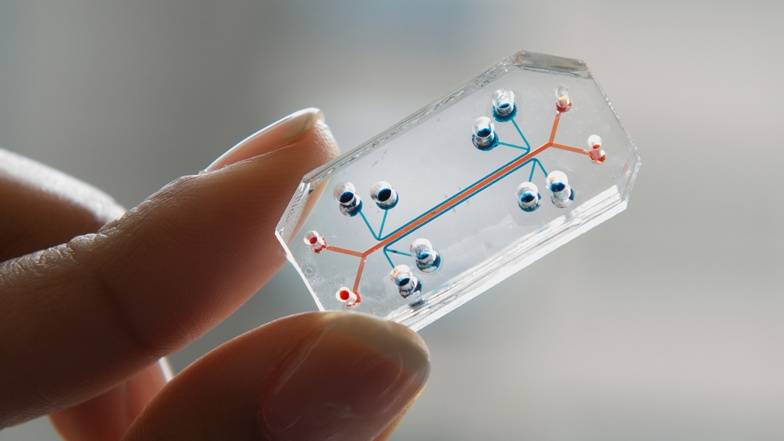The organ-on-chip technology is a customizable chip that has inbuilt facilities to enable the mimicking of the responses of organs or organ systems to various materials like drugs for instance. The responses that can be mimicked on this technology usually are mechanical or physiological in nature. In clinical research, this technology has the potential to replace animal-based testing prior to clinical trials and also to help quicken the efficiency of drug discovery processes.
In-vitro cell culture and animal modeling have been the mainstay of traditional clinical study and any errors generated lead to costly recovery efforts and can be fatal when live humans are being tested on with experimental drugs. An alternative to this conventional approach, especially in pre-clinical development is the Organ-on-Chip technology.
 The structure of a basic organ-on-chip is that built on clear pieces of silicon similar to how computer chips are. Liquid silicone is poured into a mold and left to harden. The mold has a channel, thus creating a space in the chip. This is where the human cell is grown. Nutrients, test drugs, or any other material that is desired by the researcher can be poured on the silicon chip where it interacts with the living cell and produces responses.
The structure of a basic organ-on-chip is that built on clear pieces of silicon similar to how computer chips are. Liquid silicone is poured into a mold and left to harden. The mold has a channel, thus creating a space in the chip. This is where the human cell is grown. Nutrients, test drugs, or any other material that is desired by the researcher can be poured on the silicon chip where it interacts with the living cell and produces responses.
In the case of clinical research where drugs need to be tested prior to live human trials, the responses obtained on the organ-on-chip can be used to deduce the safety levels of the drug in theory.
Another reason to promote the use of organ-on-chip technology is that the human cell being grown in the silicon chip can be sourced from the patient itself. Thus, drug responses of such a living cell can reveal more accurate data for further live human tests.
Also, animal models currently used prior to live human testing are not accurate because although humans and test animals like mice, rats, and others are similar in physiology, responses to drugs in mice, for instance, may not always be the same in humans. Organ-on-chip technology can overcome this inefficiency by producing more accurate results.
This technology is at the research level still and has not yet been widely implemented as a mainstream clinical research technology due to certain obstacles.
One reason why organ-on-chip will remain as an innovative but non-commercial technology is that human organs are still much more complex than artificially created organ-on-chips. There is also the gap in realizing the same reactions to drugs on the chip in a live human being.
Thus, organ-on-chip technology may appear promising in reducing the time and energy spent on a conventional clinical study approach, it still requires more research to develop it into a commercially usable large-scale technology.
But the future for organ-on-chip technology is not bleak. Due to its advantages, institutions like the Food and Drugs Administration (FDA), National Institute of Health (NIH), and the Defense Advanced Research Projects Agency (DARPA) have combined their resources to work on developing such chip technology under the project titled Tissue Chip for Drug Screening Initiative (TCDSI). This can result in new and more advanced chips being created that can give accurate information on the human body.
image source:wyss.harward
REFERENCES
http://www.businessinsider.com/what-is-an-organ-on-a-chip-2015-7?IR=T
https://en.wikipedia.org/wiki/Organ-on-a-chip#Human-on-a-chip
https://www.ncbi.nlm.nih.gov/pmc/articles/PMC4117800/
http://www.meddeviceonline.com/doc/human-organ-mimicking-chip-could-revolutionize-clinical-trials-0001



